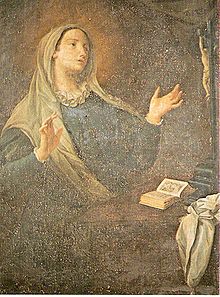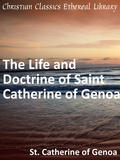St. Catherine of Genoa
Italian Roman Catholic saint and mystic
Biography
Catherine Fieschi was the youngest of five children born in Genoa to an aristocratic family. Her father, a former viceroy of Naples, died when Catherine was 14; two years later, for political and financial reasons, her brother arranged her marriage to Giuliano Adorno, a member of a rival family. The marriage was not a happy one, and for ten years Catherine alternated between seclusion and social activity; there were no children (although her husband had at least one child by a mistress).
When she was 26, Catherine experienced a religious conversion. At about the same time (it's not clear which came first), her husband became bankrupt. Catherine began a life of social work --- going into Genoa's slums to help the sick and poor. For the first few years of this work, the sheltered aristocratic woman had great difficulty in overcoming her physical repugnance at dealing with the very poor and the very ill.
By 1477, Catherine's husband had begun to help with her work. He later became a Franciscan tertiary (a lay person affiliated with the order); Catherine herself never became associated with any religious order. In 1479 the couple moved into rooms near the large Pammatone Hospital for the poor of Genoa and worked there, without pay.
In 1490, Catherine became the director of the hospital, and worked successfully to improve the institution's financial situation. In 1493, the plague came to Genoa, killing up to 80% of those who stayed in the city. Catherine supervised those Genoese who, like her tertiary husband, cared for the dying. In 1496 her husband died and she resigned her position as director, although she continued working full time until 1499, when her health began to fail.
During the ten years before her death, Catherine wrote Trattato del Purgatorio, describing her beliefs about Purgatory: she saw a place of joy rather than a place of physical suffering. She also wrote what would become the first part of Dialogo Spirituale: a witty conversation embodying the internal conflict she had undergone between her spiritual goals and her bodily desires. It was also during this period that she accepted, for the first time, a spiritual director, her successor as head of the hospital; it was he who would write her Vita.
A group of disciples gathered around her in the last years of her life; some wrote down her words when they were with her, others recorded what they remembered after her death. Her closest disciple, the young nobleman Ettore Vernazza, whom she had met during the plague, gathered these notes, which would become the last two parts of Dialogo. Some years after Catherine's death, her writings, with those of her confessor and her disciples were published together; it is this that you will find online as her Life and Doctrine.

